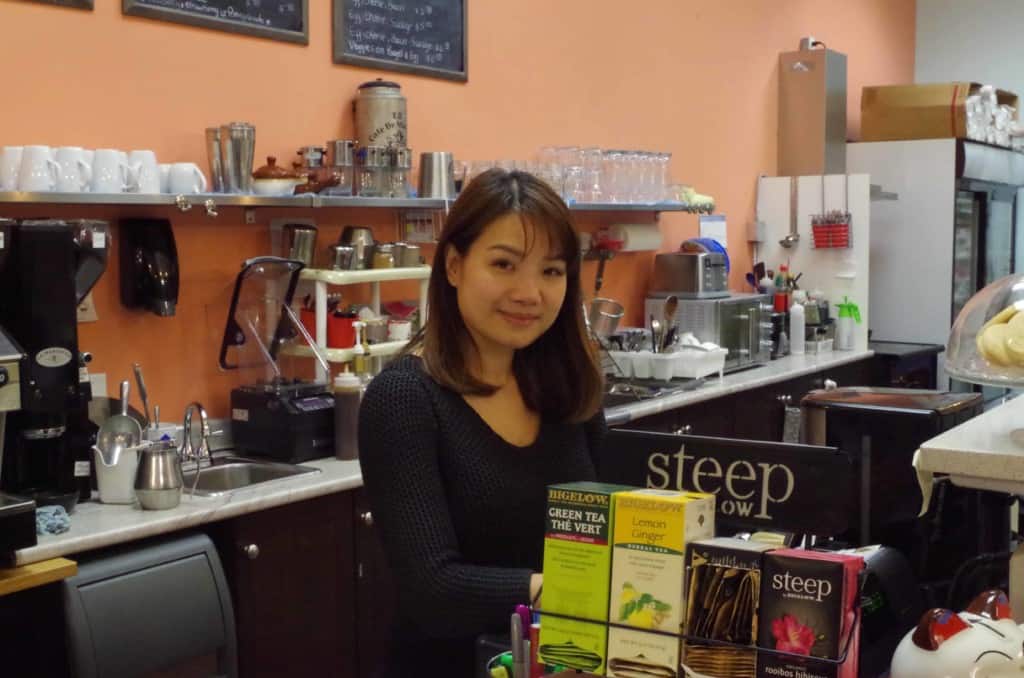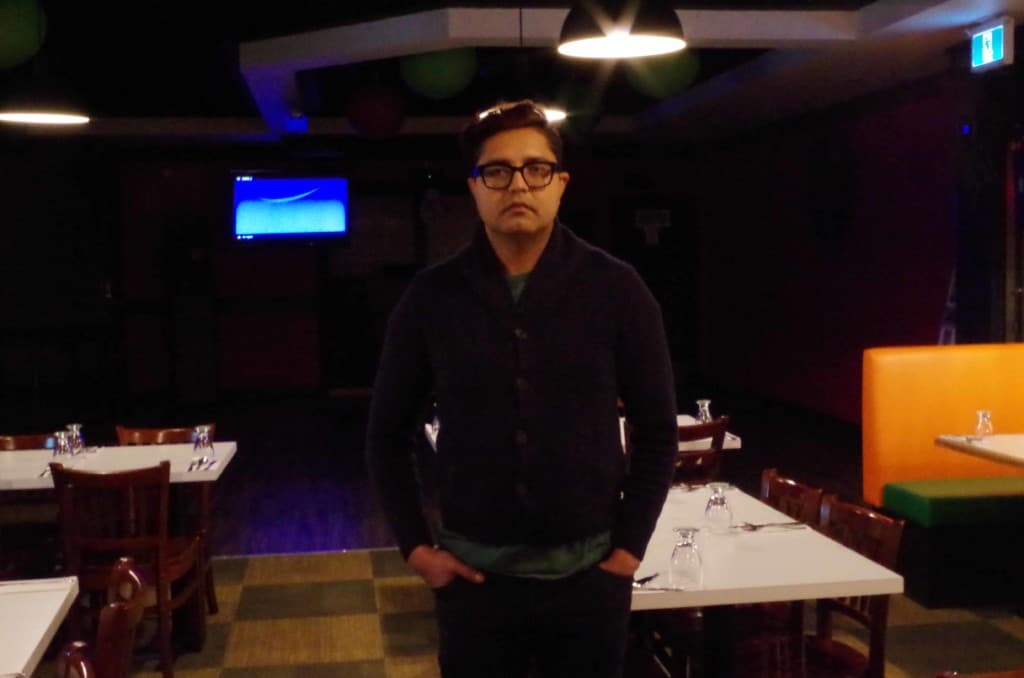Convenience trumps dining in restaurants
Third-party delivery services are changing the food industry
Owning a restaurant is a finicky venture involving high risks, long hours, and no guaranteed profit. But in the past few years, the game has changed with third-party delivery services. SkipTheDishes, Uber Eats, and Foodora have opened up opportunities to increase sales and exposure of a restaurant, and many local restaurants have signed up.
Laura Truong, owner of T & D Vietnamese Noodle House, says that while they have a few more delivery orders than in-house sales, they still get plenty of customers eating in.
“I feel like we are still in the phase of building. Because of the location, I find not a lot of people know about us. Or it’s hard to see, so they kinda miss it. Gradually, in the five years [since opening] I’ve noticed that take-out stuff has been getting busier. But I haven’t really seen a decline in here, because we are still building.”
T & D Noodle House started with Uber Eats, but added SkipTheDishes seven months ago and recently added Foodora. Truong noted increased business since using SkipTheDishes. “It could be the demographics. It’s just more convenient. I don’t know if it has something to do with parking as well. It’s just easier.”
Like any business, busy times in restaurants fluctuate. Sometimes deliveries will bring more sales than dining in, especially when there are promotions. “I know with SkipTheDishes, if you order over 20 dollars, then the delivery fee is waived. Uber Eats, a while back at Christmas, did a buy one, get one free. They match the meal itself. That’s something the companies do to generate more [business],” says Truong.

Joanna Savoie, owner of Jasmine Belle Café, uses delivery services but says dining in has a positive impact on community members. | Stephen Strand 
Ed Donszelmann, owner of Otto Food & Drink, chose not to use any third-party delivery service. | Stephen Strand 
Manoz K.C., owner of Swagat India Bar and Bistro, doesn’t plan to use third-party delivery services forever. | Stephen Strand
These delivery companies charge restaurants 25 per cent of the sales for each delivery, but Truong still encourages new restaurants to sign up.
“Honestly, I wish I went that way sooner. It’s another stream. When you’re paying and you’re struggling, that’s what you think of. If I’m not making sales in a day and I still have an overhead cost, I’m still in the negative today because I didn’t make any sales. You’re still paying. Something is still better than nothing.”
But the ability to eat at a restaurant plays an important role in the community.
“You need that foot traffic as well. It brings the vibrancy to the neighbourhood,” says Truong. “I like the whole aspect of people coming in and building that relationship with them. That’s what builds a community.”
Swagat India Bar and Bistro offers delivery themselves and also uses third-party delivery services. “We just started three-and-a-half months ago, so SkipTheDishes is the biggest supporter,” says Manoz K.C., owner of Swagat. But they don’t plan to use those services forever. “If you want a strong clientele service, if you want to make a good reputation as a restaurant, then many people should come eat here.”
K.C. said when people dine in, they have the opportunity to have a few drinks, which brings more revenue to the restaurant.
Jasmine Belle Café, open for two years, has used delivery services for a year.
“Dining in is always better for us. There is a very high fee that [third-party delivery services] charge. It does take away from our profit,” says Joanna Savoie, the owner. “When we have SkipTheDishes or Foodora, it kind of helps [during] slow times.” Still, more people dine in than out at Jasmine Belle Café.
“[Delivery] affects the community for sure, because it makes them blue. They are at home, everything is going to them instead of going out. It is better for us, better for you; when you get out, you can experience it.”
Otto Food & Drink made the choice to not deliver. “Related to space, our kitchen is very small. Also, if we are really busy, for the kitchen to suddenly get 10 orders to go, I don’t even know what would happen,” says Ed Donszelmann, owner. “Enough restaurants are doing the delivery service, so there must be some money in it. For me, I’m not quite as interested in doing it, mainly because of what I am trying to do here at Otto. The whole idea behind Otto is to create a meeting place. A neighbourhood, a local meeting place.” That said, people from all over Edmonton frequent the restaurant. “The whole idea is to come and visit with your friends or family that you’ve come to the restaurant with.”
Joachim Holtz, executive director of Alberta Avenue Business Association (AABA) says, “Running a restaurant is not easy. I spent 30-some years in the banking business and I financed a lot of hospitality businesses in my time. A lot of them were independent businesses. Lots of them are family owned. Running a restaurant is not an easy job. It can be very rewarding. But it takes the owners a lot of time, they work a lot of long hours.”
For third-party delivery options, Holtz says, “Some of the restaurants are getting additional sales and they are not getting as many people into their restaurants. There are a whole bunch of factors that can determine why they are not getting people in the restaurant.”
Since 2016, AABA has hosted Eats on 118 food tours, which encourages people to try local restaurants and return to them afterwards. The tours have been successful and will return as Eats On 118: Dine the Ave in June.
Featured Image: Laura Truong, owner of T & D Vietnamese Noodle House, with Judie Heang, an employee. Truong advises new restaurants to sign up for third-party delivery services. | Stephen Strand







